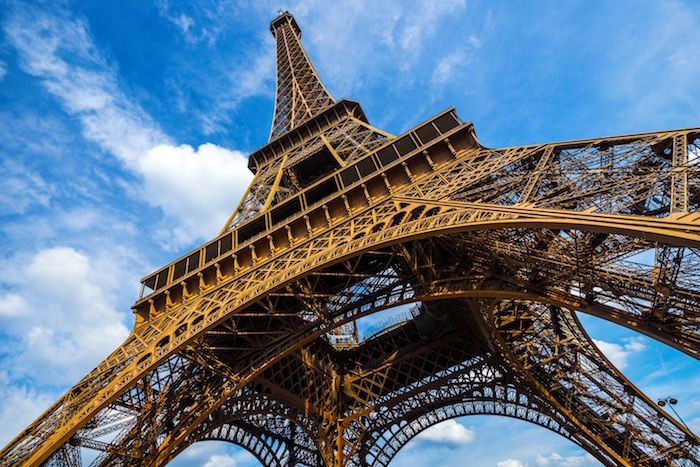
Great cities should have an iconic centerpiece.
That, at least, was the thinking of the planning committee for the Paris Centennial in 1889 – a World’s Fair that would coincide with the 100th anniversary of the French Revolution.
The planners were biased. They wanted something really big. At that time the Washington Monument in D.C., standing at 500 feet or 152.4 meters, was the tallest human-crafted structure in the world. What if Paris could become the home of a 200-meter free-standing engineering marvel? No, it should be taller than that. Why not shoot for 300 meters?
The committee launched a competition for the most innovative design. More than 100 entries were submitted.
One of them proposed a guillotine taller than an 80-story building. Innovative capital punishment is certainly one of the legacies of the French Revolution, but the committee wisely chose to go in a different direction.
They picked instead the 324-meter (1,063 ft) iron tower proposed by the construction firm of Gustave Eiffel, an engineer already famous for crafting a number of spectacular bridges. He had also designed the interior iron skeleton of the Statue of Liberty, France’s gift of friendship to the United States three years earlier.
From the start, there was outrage. The tower looked like an oil derrick in west Texas. As Bill Bryson explains in his book At Home, “The Eiffel Tower wasn’t just the largest thing that anyone had ever proposed to build, it was the largest completely useless thing.” It wasn’t a museum, a mausoleum, a memorial, or a cathedral. It was simply 9,500 tons of iron beams, with a restaurant, an observation deck, and an elevator thrown in.
Dozens of Paris’ most famous artists signed their names to a feverish petition:
We, writers, painters, sculptors, architects and passionate devotees of the hitherto untouched beauty of Paris, protest with all our strength, with all our indignation in the name of slighted French taste, against the erection … of this useless and monstrous Eiffel Tower … To bring our arguments home, imagine for a moment a giddy, ridiculous tower dominating Paris like a gigantic black smokestack, crushing under its barbaric bulk Notre Dame, the Tour Saint-Jacques, the Louvre, the Dome of les Invalides, the Arc de Triomphe, all of our humiliated monuments will disappear in this ghastly dream.
A mathematician produced pages of calculations “proving” that the tower would fall down in a strong breeze.
Gustave Eiffel calmly took it all in stride. The tower was built in less than two years and came in well under budget (certainly atypical for a massive civic project). More than 125 men helped maneuver its 18,000 intricately fitted parts, often at dizzying heights. There was not a single casualty. Skeptics doubted that the four giant legs, each of which leans inward at an angle of 54 degrees, could ever be precisely aligned with the first platform, a giant slab of iron 180 feet above the ground. But Eiffel made it happen.
The results were breathtaking. No one had ever been able to look down upon a major city from such a height.
The tower was supposed to stand for only 20 years. But Parisians gradually came to appreciate it.
Well, almost everyone. The celebrated writer Guy de Maupassant is said to have eaten lunch in the tower’s restaurant every day because it was the only place in the city where he didn’t have to look at it.
Indeed, Paris is now automatically associated with the tower, and the tower with the capital of France. One of Hollywood’s enduring conventions is that any scene purported to be in Paris simply has to include a glimpse of Eiffel’s most famous creation in the background.
Things that are high have always fascinated human beings. They are suggestive of power and transcendence.
In Bible times altars were typically built on “high places.” Sacrifices were offered by high priests. The devil tempted Jesus to leap from the highest point on the Temple Mount, because that would be spectacular. We speak today of high ideals and high achievers. Politicians run for high office. Even drug-taking is described as “getting high” – an experience that makes us feel that at least for a moment we can exist on a higher plane.
At least 50 times in the Old Testament, however, God is described as the Most High. Note the superlative. God isn’t just somewhere up there with other important realities. He is the Most High.
So what does it mean to honor God as God?
It means to do a fearless inventory of every single thing in my life to which I attribute value.
And then to live in such a way that I can say, with integrity, God tops this, too.
